Jewel cichlid - Hemichromis bimaculatus
Scientific name: Hemichromis bimaculatus
Common name: Jewel cichlid
Family: Cichlidae
Usual size in fish tanks: 10 - 13 cm (3.94 - 5.12 inch)
014
Recommended pH range: 6 - 7.8
Recommended water hardness: 4 - 18°N (71.43 - 321.43ppm)
0°C 32°F30°C 86°F
Recommended temperature range: 22 - 28 °C (71.6 - 82.4°F)
The way how these fish reproduce: Spawning
Where the species comes from: Africa
Temperament to its own species: peaceful
Temperament toward other fish species: aggressive to smaller
Usual place in the tank: Middle levels
Origin
The Jewel Cichlid, scientifically known as Hemichromis bimaculatus, hails from Africa, primarily inhabiting the rivers and streams of West Africa. They are commonly found in slow-moving waters with muddy substrates, densely vegetated banks, and an abundance of hiding spots. In the wild, these cichlids experience a variety of water conditions depending on the season, including changes in temperature, pH, and water flow. Mimicking their natural habitat in the aquarium helps to reduce stress and encourages natural behaviors, making them a vibrant and active addition to any tank.
Appearance
Jewel Cichlids are renowned for their stunning coloration, particularly when they reach maturity or during spawning periods. They possess a brilliant, iridescent red body covered in jewel-like blue spots, which become even more intense in breeding mode. Adult specimens grow to about 10-13 cm (3.94-5.12 inches) in aquariums, and their vibrant colors make them a striking focal point in a home setup. Males tend to be slightly larger and exhibit more vivid coloration than females, especially when ready to breed.
Feeding and Diet
Jewel Cichlids are omnivorous and thrive on a varied diet. Although they will readily accept high-quality flakes or pellets, their diet should be supplemented with protein-rich foods to support their growth, coloration, and overall health. Live or frozen foods such as brine shrimp, bloodworms, daphnia, and live tubifex worms are excellent options. Occasionally offering blanched vegetables like spinach or zucchini provides essential nutrients and adds variety to their diet.
Feed adult Jewel Cichlids once or twice a day, offering only what they can consume in a few minutes to prevent overfeeding and maintain water quality. Younger fish may benefit from more frequent, smaller meals throughout the day. Providing a diverse diet helps enhance their vibrant coloration and supports a strong immune system, promoting a longer, healthier lifespan.
Tank Setup and Environment
Jewel Cichlids are territorial and can be highly aggressive, particularly during breeding periods. Therefore, a spacious aquarium is essential to accommodate their active nature and minimize territorial disputes. A tank of at least 115 liters (30 gallons) is suitable for a single pair, but a larger tank (200 liters/50 gallons or more) is recommended if keeping them with other fish.
To replicate their natural habitat, use a sandy or fine gravel substrate and incorporate plenty of decorations, such as rocks, driftwood, and caves, to create hiding spots and break up the line of sight. This setup helps reduce aggression and provides the cichlids with designated territories. Including hardy, robust plants like Anubias or Java Fern can add additional hiding places and create a more natural environment, although some Jewel Cichlids may uproot or nibble on plants.
Maintain moderate lighting to enhance their natural colors and avoid stressing the fish. A powerful filtration system is crucial to keep the water clean, as Jewel Cichlids produce a significant amount of waste. Regular water changes (20-30% weekly) are essential to maintain optimal water conditions and reduce the build-up of toxins. Install an adjustable heater to maintain a stable water temperature, which is vital for their health and well-being.
Water Parameters
Jewel Cichlids are relatively adaptable to various water conditions but prefer a pH range of 6.0-7.8 and water hardness between 4-18°N (71.43-321.43 ppm). They thrive in warm water, with a recommended temperature range of 22-28°C (71.6-82.4°F). Regular monitoring of water parameters is crucial, as fluctuations can cause stress and increase aggression in these cichlids.
To maintain these conditions, use a pH test kit weekly and check the carbonate hardness (KH) and general hardness (GH) to ensure the water remains within their preferred range. Jewel Cichlids require well-oxygenated water, so ensure adequate surface agitation and use an air stone if necessary. Proper aeration helps mimic their natural riverine environment and supports their active lifestyle.
Behavior and Compatibility
Jewel Cichlids are known for their vibrant colors and territorial behavior, particularly when breeding. While they are generally peaceful toward their own species when not spawning, they can become highly aggressive towards other tankmates, especially those that intrude on their territory. Because of this, they are best kept in a species-only tank or with other robust, similarly sized cichlids that can defend themselves.
If housed in a community setup, choose tankmates wisely. Suitable companions include larger, non-aggressive species like Synodontis catfish or other African cichlids that can match the Jewel Cichlid's temperament. Avoid keeping them with small, delicate fish, as they may be harassed or injured. Providing plenty of hiding places and visual barriers in the tank is key to managing aggression and reducing stress among tank inhabitants.
Sexing
Sexing Jewel Cichlids can be challenging, especially when they are not in breeding mode. Males are typically larger and exhibit more intense coloration compared to females, particularly during spawning periods. Observing their behavior during courtship can also provide clues, as males often display more assertive and vibrant displays to attract females. However, for most aquarists, distinguishing between males and females may require close observation over time.
Breeding
Breeding Jewel Cichlids in captivity is relatively straightforward, but it requires careful preparation to ensure success. To induce spawning, slightly raise the water temperature to around 26-28°C (78.8-82.4°F) and provide plenty of flat surfaces, such as rocks or broad-leaved plants, for the female to lay her eggs. The pair will clean the selected site before spawning, and the female can lay up to 500 eggs in a single batch.
Both parents take an active role in guarding the eggs and newly hatched fry. The eggs typically hatch within 2-4 days, and the parents will move the fry to different areas of the tank for protection until they become free-swimming. Once the fry are free-swimming, they can be fed newly hatched brine shrimp or finely crushed flake food. During the breeding period, the adults can become extremely aggressive, so it is advisable to provide ample space and hiding spots for other tankmates.
Lifespan
The expected lifespan of the Jewel Cichlid (Hemichromis bimaculatus) is up to 5 years, although with optimal care, some individuals may live slightly longer. Their longevity is influenced by factors such as diet, water quality, tank size, and overall stress levels in the aquarium environment.
Short Description
Jewel Cichlids are a vibrant, territorial species known for their stunning red and blue coloration. Native to the rivers of West Africa, they thrive in aquariums that replicate their natural habitat with plenty of hiding spots and well-maintained water conditions. Due to their aggressive nature, especially during breeding, they are best suited for experienced aquarists and should be kept in species-only tanks or with carefully selected tankmates. Their active, fascinating behaviors make them a rewarding choice for those prepared to meet their care requirements.
Pictures
Thanks to Jeff Catalina for allowing us to use the picture. The second picture came from another souce (see the picture for more details). Other pictures were bought by aqua-fish.net from jjphoto.dk. Also Jonathon Whipple sent us some pictures.








 Thread-finned
Thread-finned 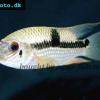 Acara
Acara  Yellow
Yellow  Patrick's
Patrick's  Blue
Blue  Green
Green 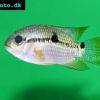 Acara
Acara  White
White  Compressed
Compressed 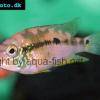 Pastel
Pastel  Midas
Midas  Red
Red  Bluemouth
Bluemouth  False
False 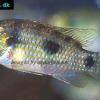 African
African  Agassiz's
Agassiz's  Banded
Banded 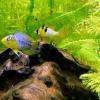 Yellow
Yellow  Cockatoo
Cockatoo  Blue
Blue  Blackstripe
Blackstripe  Highfin
Highfin  Redstripe
Redstripe  Threadfinned
Threadfinned  Macmaster’s
Macmaster’s 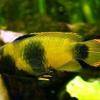 Panda
Panda  Norbert’s
Norbert’s 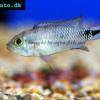 Blue
Blue  Thin-line
Thin-line  Three-striped
Three-striped  Viejita
Viejita 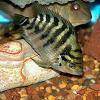 Flier
Flier  Archocentrus
Archocentrus  Convict
Convict  Seven
Seven  Spiny
Spiny  Oscar
Oscar  Sunshine
Sunshine  Chitande
Chitande  Firebird
Firebird  Midnight
Midnight  Lake
Lake  Sunshine
Sunshine  Aulonocara
Aulonocara  Nyasa
Nyasa 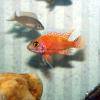 Ruby
Ruby  Grants
Grants  Aulonocranus
Aulonocranus  Chameleon
Chameleon  Benitochromis
Benitochromis  Orinoco
Orinoco  Yellow
Yellow 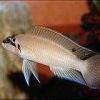 Brichard’s
Brichard’s  Guenther’s
Guenther’s  Southern
Southern  Cichla
Cichla 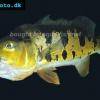 Peacock
Peacock  Chiseltooth
Chiseltooth  Bolivian
Bolivian  Red
Red  Many-pointed
Many-pointed  Jack
Jack  Red
Red  Three
Three 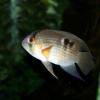 Keyhole
Keyhole  Azureus
Azureus  Red
Red  Jackson’s
Jackson’s  Crenicichla
Crenicichla  Honduran
Honduran  Blue-eye
Blue-eye  Afra
Afra 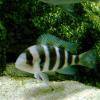 Frontosa
Frontosa  Slender
Slender  Malawi
Malawi  Chequerboard
Chequerboard  Checkerboard
Checkerboard  Malawi
Malawi  Ectodus
Ectodus  Tanganyika
Tanganyika  Canara
Canara  Green
Green  Rostratus
Rostratus  Pearl
Pearl 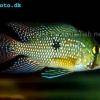 Geophagus
Geophagus  Yellowhump
Yellowhump  Suriname
Suriname  Redhump
Redhump  Red
Red  Dority’s
Dority’s  Argentine
Argentine 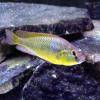 Burton’s
Burton’s  Victoria
Victoria 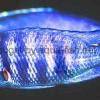 Haplochromis
Haplochromis  Banded
Banded 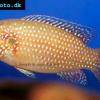 Lifalili
Lifalili  Lowland
Lowland  Texas
Texas  Pantano
Pantano  Severum
Severum  Banded
Banded 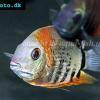 Severum
Severum  Rainbow
Rainbow  Parrot
Parrot  Chocolate
Chocolate  Brown
Brown  Marlieri
Marlieri  Golden
Golden  Striped
Striped  Masked
Masked 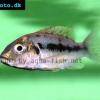 Konye
Konye  Blue
Blue  Trewavas
Trewavas  Electric
Electric  Dwarf
Dwarf  Redbreast
Redbreast  Lamprologus
Lamprologus  Gold
Gold 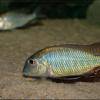 Greenface
Greenface 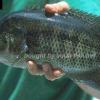 Mayan
Mayan  Aurora
Aurora  Blue
Blue  William’s
William’s 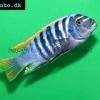 Zebra
Zebra  Malawi
Malawi  Blue
Blue 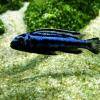 Blue
Blue  Mbuna
Mbuna  Parallel
Parallel  Purple
Purple  Flag
Flag  Bolivian
Bolivian  Ram
Ram  Basket
Basket 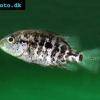 Haitian
Haitian  Zebra
Zebra  Striped
Striped  Neolamprologus
Neolamprologus  Brevis
Brevis  Fairy
Fairy 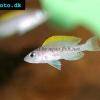 Neolamprologus
Neolamprologus  Cylindricus
Cylindricus  Hecq’s
Hecq’s  Neolamprologus
Neolamprologus  Lemon
Lemon  Mustax
Mustax  Daffodil
Daffodil  Six-bar
Six-bar  Five-bar
Five-bar  Marbled
Marbled 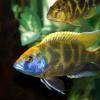 Giraffe
Giraffe  Blue
Blue  Sulphurhead
Sulphurhead  Wolf
Wolf  Jaguar
Jaguar  Blue
Blue  Marakeli
Marakeli  Madagascar
Madagascar  Pinstripe
Pinstripe  Pelmatochromis
Pelmatochromis  Kribensis
Kribensis 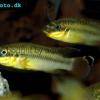 Striped
Striped  Red
Red  Deepwater
Deepwater  Fenestratus
Fenestratus  Nichols’
Nichols’  Southern
Southern  Bumble
Bumble  Demason’s
Demason’s  Slender
Slender  Red
Red  Mbuna
Mbuna  Malawi
Malawi  Kenyi
Kenyi  Powder
Powder  Altum
Altum  Angelfish
Angelfish  Angelfish
Angelfish 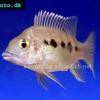 East
East  Juba
Juba  Earth
Earth 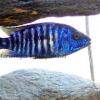 Electric
Electric  Azure
Azure  Lionhead
Lionhead  Discus
Discus  Blue
Blue  Red
Red  Zebra
Zebra  Brichard’s
Brichard’s  Blue
Blue  Firemouth
Firemouth  Zebra
Zebra  Yellow
Yellow  Blue
Blue  Dwarf
Dwarf  Blunthead
Blunthead 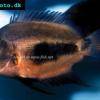 The
The  White
White  Twoband
Twoband  Fenestratus
Fenestratus  Window
Window  Tailbar
Tailbar  Black
Black  Redhead
Redhead 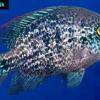 Oaxaca
Oaxaca  Xenotilapia
Xenotilapia